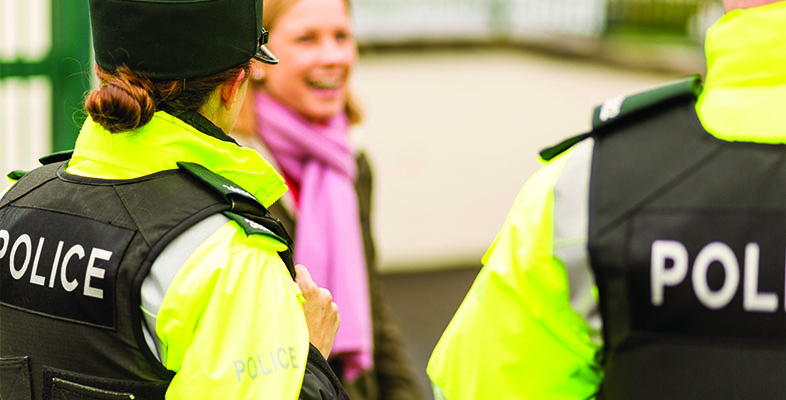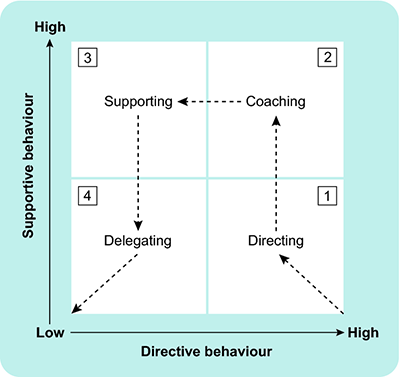4.1 Being a leader might depend on context
Looking beyond traits, it’s also important to consider the context in which leadership takes place. First developed in the 1960s by Paul Hersey and Ken Blanchard (Hersey and Blanchard, 1969), the situational leadership model is based on the idea that how an individual leader acts depends on the nature of the situation in which they find themselves. Consequently, the most relevant and appropriate behaviours can vary greatly from situation to situation. As shown in the diagram in Figure 2, this model is based on the combination of both directive behaviours (i.e. those designed to help group members achieve goals using guidance and direction) and supportive behaviours, which provide motivation that helps to keep group members focused on their objectives.
The underlying ethos of the situational leadership model is that you can maximise leadership effectiveness by being aware of the relationship between ‘people behaviour’ and ‘task behaviour’, and therefore help people to be more productive and fulfilled in their roles. Each person with whom the leader interacts will be at a different stage of need and will therefore require a different leadership style in order for that interaction to be effective.

